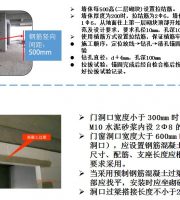preface: In the silicon wafer manufacturing process of a large scale integrated circuit factory with advanced technology, about 50 different electronic gases are used in the whole process
. 
Most of them are special gases
. 
This paper gives a brief description of the design and construction of special gas system
.
01 concept Special gas transmission system refers to: the special gas from the gas source end, according to the process requirements of process equipment, through the control of flow, pressure and other parameters, through the pipeline, no secondary pollution, stable transmission to the gas point of process equipment
.
The basic process is: gas source → control cabinet → pipeline transmission → VMB → gas point 02 classification According to different gas properties, special gases are generally divided into inert gas, flammable and explosive gas, toxic gas and corrosive gas; According to the different supply packaging, it can be divided into: special gas and bulk special gas
.
03 Selection of gas supply system 1
.
Simple air supply system The simple gas supply system mainly aims at the semiconductor chip factories of 4 inches and below, the scientific research institutions of semiconductor materials and some single process equipment
.
Their manufacturing process is simple, they usually do not need continuous gas supply, and their investment budget for gas supply system is low
.
Due to the small gas flow and infrequent use, ordinary steel cylinders (< 50L) are often used as special gas sources
.
The conveying system mostly adopts semi-automatic cylinder cabinet or cylinder rack with simple control panel; Equipped with relay control, automatic switching, manual purging, manual venting, hazardous gas equipped with emergency shut-off valve
.
The inert gas bottle rack adopts the full manual system, and some even use the single bottle system
.
All gases share one gas room, or even no gas room
.
Special gas cylinders and conveying systems are sometimes placed in return air chutes, or directly next to or next to process manufacturing equipment
.
If there is no special dangerous gas, a common exhaust system is generally used
.
Simple gas supply system usually has security risks
.
2
.
Conventional gas supply system The conventional gas supply system is mainly used in 4-6 inch large scale integrated circuit plants, solar cell production lines under 50MW, chip process lines of light-emitting diodes and other electronic industries with medium gas consumption
.
The requirement of gas purity control is not harsh, and the system is as simple as possible on the premise of meeting the safety, saving investment
.
The special gas is supplied by ordinary steel cylinder (< 50L)
.
Special gas conveying system adopts gas cylinder cabinet
.
Equipped with automatic PLC controller and color touch screen; The gas panel adopts pneumatic valve and pressure sensor, which can realize automatic switching, automatic nitrogen purging and automatic vacuum auxiliary venting; Multiple safety protection measures, leakage detection, remote emergency cut-off; Special nitrogen purging and so on
.
VMB adopts branch pneumatic valve, nitrogen purging and vacuum assisted evacuation
.
Semi automatic cylinder rack, relay control, automatic switching, manual purging and manual venting are used for inert gas; VMB main pipe pneumatic valve, nitrogen purging; Branch pneumatic valve, nitrogen purging, vacuum assisted evacuation
.
The gas room and exhaust system are classified according to the nature of the gas
.
3
.
Bulk special gas supply system Large scale gas supply system mainly aims at large-scale mass production of 8-12 inch (1 inch = 25.4 mm) VLSI plants (gas types include SiH4, N2O, 2, C2F6, NH3, etc.), solar cell production lines with more than 100 MW (gas types include NH3), epitaxial process lines of light-emitting diodes (gas types include NH3), and high-speed gas supply system Over 5 generations of LCD factories (gas types include SiH4, Cl2, NH3, NF3), optical fiber (gas types include SiCl4), silicon material epitaxial production line (gas types include HCl), etc
.
Their investment scale is huge
.
They use the most advanced process equipment and have a large demand for gas
.
They put forward the most stringent requirements for stable and uninterrupted supply, purity control and safe production
.
For the supply of special gases in these factories, in addition to the special gases packed in ordinary steel cylinders (50L and below), there are many kinds of special gases commonly packed in large containers, so they are called bulk special gases, including y-cylinder (450L), T-cylinder (980l), container (940l), ISO tank (22500l), torpedo car (13400l), etc
.
The bulk special gas supply system (bsgs) adopts full-automatic PLC controller and color touch screen; The gas panel adopts pneumatic valve and pressure sensor, which can realize automatic switching, automatic nitrogen purging and automatic vacuum auxiliary venting; Multiple safety protection measures, leakage detection, remote emergency cut-off; Special nitrogen purging and so on
.
Independent gas source is used for special gas, VMB or VMP shunt supply is used for multi-purpose points, branch pneumatic valve is used for VMB or VMP, nitrogen purging, vacuum assisted evacuation, etc
.
Due to the large amount of bsgs gas source, independent gas room and independent exhaust system are often used 04 Selection and design of gas room In addition to the simple gas supply system, the special gas room is generally built independently of the main room, and its planning needs to consider the building fire prevention, explosion relief, fire and explosion-proof distance, total amount control of dangerous substances, etc
.
The conventional gas supply system generally adopts a variety of gas cylinder cabinets, which are set in one gas chamber; For large amount of special gas, the gas room will be divided into combustible gas room, corrosive gas room, inert gas room, silane gas room and toxic gas room according to gas characteristics and compatibility
.
The gas room must have good ventilation, and the selection and design of the gas room are generally completed by the design institute
.
05 Design of piping system 1
.
Material selection 316L stainless steel electrolytic polishing (EP) pipeline is widely used in special gas pipeline system, and high-purity pressure regulating valve, diaphragm valve, high-precision filter, (< 0.003 micron), VCR connector, etc
.
are generally used for valves
.
The surface roughness of pipeline parts contacting with gas can be controlled within 5uin
.
For some highly corrosive gases such as Cl2, EP pipes with strong corrosion resistance after special treatment are used
.
2
.
Design of main pipeline system After determining the gas room and gas consumption point, the main pipeline system generally follows the principle of the shortest pipeline line, the least turning, the compact and reasonable layout, giving a simple and beautiful feeling
.
The number of conveying systems and the size of pipe diameter are generally determined according to the number of air consumption points and the flow rate of the machine
.
Small diameter conveying (1 / 4-3 / 4) is basically adopted, and standby systems are mostly designed
.
Due to the danger of the gas itself, many places use to lay the pipeline in the cable tray
.
For the places that pass through the wall or through the corridor, where there are dangerous sources and often dangerous operations around, the pipeline in the open air is generally arranged in the fully enclosed cable tray
.
For low vapor pressure gas (wf6, DCS, BCl3, C5F8, clf3, etc.), it is necessary to consider cylinder heating, gas panel heating, pipe tracing, etc
.
In order to accurately control the flow rate, high-precision pressure transmitter, electronic scale, temperature controller and so on are generally considered at the air source end
.
Mass flow meters and pressure regulating valves are also equipped at the gas points of the machine
.
For highly toxic, highly reactive and spontaneous combustion gas, double casing should be used
.
At the same time, the pipeline design should adopt zero dead zone design, that is, the whole pipeline system from gas holder to VMB, from VMB to gas consumption point, point to point, and no dead angle with residual air during gas replacement is allowed
.
Therefore, in the whole pipeline system, VMB completes the gas distribution, and there is no tee in the middle
.
Finally, the pipeline should be well grounded.
.


